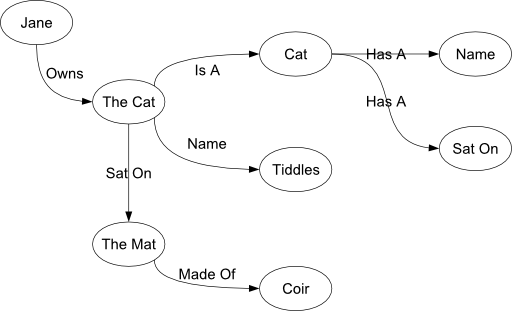
| Previous | Next | Printer friendly |
What cats can do
The idea of a unified approach is not marketing fluff, but reflects underlying IT architecture.
Why is a finance system a finance system? Why is a web content management system (CMS) a CMS? And why is a cat?
The simple answer is that the finance system is what it is because it was designed that way, and the same applies to the CMS. They are intended for different jobs and are programmed differently.
Although that's true, let's put the question another way. Why can't a finance system manage web content, and why can't a CMS manage money? And what has that got to do with cats?
You can't reprogram a finance system to be a CMS, or vice versa. The underlying data structures are different. A finance system is built on ledgers and transactions, and can not hold web content. A CMS is built on web content, templates and structures, and can not hold ledgers. The data structures of a system constrain what that system is capable of doing.
A truly versatile "do anything" system needs to be based on data structures that do not have constraints. There is a well-known approach to this: triple stores. A triple store breaks data down into triples: a subject, a predicate and an object. For example, "the cat sat on the mat" is a triple, in which "the cat" is the subject, "sat on" is the predicate, and "the mat" is the object.
Triple stores can be represented graphically, where the subjects and objects are represented by blobs called nodes, and the predicates by lines.

Jane's cat Tiddles sat on the coir mat
The beauty of triple stores is that you can use them to represent any structure: tables, lists, hierarchies, ledgers, web content, cats, and so on.
Triple stores are a well-established technology. But having a versatile data structure is only part of the story. To make Metrici truly versatile, we needed three more ingredients.
The first ingredient is to optimise the triple store. In particular, Metrici automatically calculates and stores derived views of data to improve performance dramatically.
The second ingredient is to describe the triple store in itself. We don't just capture that the cat sat on the mat, we describe what cats can do (sit on things), what properties mats have, and so on. This imposes structure on the triple store and stops it getting chaotic.
The last ingredient is a general-purpose engine that uses the description of the store to view and maintain the store online. This engine provides the basic capability for any solution. And because the store is described in itself, the same engine can be used to develop solutions.
This approach gives us a system which can hold data for any purpose, which can be structured in any way, which can be viewed and maintained online, and which can be created and maintained in itself. This provides the fundamental unification which makes Metrici a much simpler, yet much more powerful environment.
Next week I will cover how to write your own web application in Metrici in less then ten minutes. In the meantime, check out the one minute summary of Metrici's approach to data management.
Next: Your first web appSubscription
Latest newsletter:
Magical metadata
We use the term "metadata-driven" to describe IT solutions in which functionality is defined in data. Taking this to the extreme can provide unparalleled levels of speed, simplicity and versatility.
Read full newsletter
System governance
System governance helps you implement high-quality systems, manage existing systems proactively, and improve failing systems.
Copyright © 2005-2015 Minimal IT Ltd. All rights reserved.
Minimal IT: research, training, consultancy and software to reduce IT costs.
